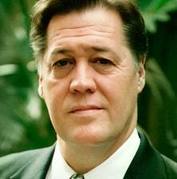NEW ORLEANS (RNS) — Jason Berry is sipping an Old Fashioned in La Petite Grocery, talking about City of a Million Dreams, the splendid soup-to-nuts history that he’s written to mark the 300th birthday of his beloved home town. The deep theme of the book, he says, is “spirit versus law,” and it’s a theme exemplified nowhere more than in the religion of the place.
Take Padre Antonio de Sedella, the Spanish Capuchin known as Père Antoine to the French speakers who dominated La Nouvelle-Orléans in its first century. He arrived as an agent of the Spanish Inquisition and ended up as the city’s leading advocate for the poor and enslaved. Kicked out of the city by the powers-that-be, he returned to the city in triumph, becoming rector of St. Louis Cathedral and running off any bishop who got in his way.
“He was a megalomanic who wanted to be loved by the people at the margins,” Berry says.
Then there was Mother Catherine Seal, a spiritualist healer whose beliefs harked back to the Great Mother cults of prehistory and whose followers came from every race and class. In the 1920s, she established a sprawling complex in the Lower Ninth Ward that took in unwed mothers, abused women.
And Sister Gertrude Morgan, a mystic who believed herself to be both bride of Christ and bride of God the Father. After World War II, she became one of the city’s celebrated folk artists.
These are the characters Berry lifts up as emblems of a city where the counter-narrative has always mattered more than the narrative.
In its earliest days, visitors were shocked and amazed by the circle dances regularly performed by enslaved Africans, who managed to insist on their culture in the face of oppression. After the Civil War, when whites embraced Jim Crow and the religion of the Lost Cause, blacks countered with jazz, which carried the day despite the disapproval of the city elite.
“Jazz not only becomes a language of solidarity within the black community but it breaks across barriers of race and white people are dancing to it,” said Berry.
The signature expression of the city’s transgressive public life is, of course, Mardi Gras, the culmination of the pre-lenten Carnival season. In premodern Europe, this was when the social world was represented upside down, with those on the bottom behaving like those on the top in a festival of misrule. In New Orleans, the tradition became hopelessly mixed, with the white elite parading like lords of misrule and African-Americans parodying them for doing so.
“Parading is such a sinuous thread through the history of New Orleans,” said Berry.
Berry is something of a transgressive figure himself. Thirty-five years ago, he caught wind of a pedophile priest in southern Louisiana and ended up breaking the story of the abuse scandal in the Catholic Church. If anyone deserves to have his name on today’s Catholic counter-narrative, it’s him.
Tragically, it’s a counter-narrative much less edifying than New Orleans’.






